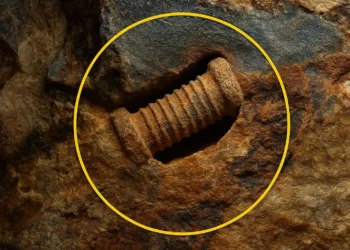Imagine waking up every day, feeling certain that what you see and experience is real—yet beneath that familiar surface, an invisible world operates by strange and unpredictable rules. That’s precisely what quantum mechanics has revealed about the universe over the past century. While everyday life appears predictable and orderly, governed by classical physics, the underlying quantum world is anything but.
This fundamental question—how does the chaotic quantum realm give rise to the stable classical reality we experience—has baffled physicists for decades. A thought experiment known as Schrödinger’s Cat offers a famous illustration of this conundrum. In the experiment, a cat placed inside a sealed box is both alive and dead until an observer opens the box. The idea highlights a critical gap in our understanding: how do quantum possibilities collapse into one observable reality?
One bold interpretation, called the “many worlds interpretation,” suggests that every possible quantum outcome actually happens but in different universes. This means there could be countless parallel realities, each reflecting a different outcome of every quantum event. While fascinating, this concept raises even more questions about why we only experience one version of reality.
New Research Offers a Fresh Perspective on Classical Reality
A team of scientists from the Autonomous University of Barcelona has taken a significant step toward answering this age-old question. Their study, recently published in Physical Review X, explores how the classical world emerges from quantum chaos. By building on the many worlds interpretation, the researchers introduced the idea of “decoherent histories”—a framework suggesting that physical processes unfold as a series of distinct steps, each leaving behind a record of past events.
Researchers explained that decoherent histories help bridge the gap between quantum uncertainty and classical predictability. Using powerful computer simulations, the research team modeled the behavior of quantum systems across 50,000 energy levels, aiming to understand when and how classical reality emerges from quantum interactions.
Their findings were striking. As the number of particles in a system increased, quantum effects diminished, and the system began to behave according to classical laws. Essentially, once a system becomes large enough, with thousands of interacting particles, the chaotic quantum behavior fades, and predictable classical physics takes over.
“The transition to classical behavior is not just likely—it’s inevitable for large systems,” noted Philipp Strasberg, one of the study’s co-authors. “This offers hope to those of us who prefer living in a stable, predictable world.”
Are Parallel Realities Still Possible?
While the study provides new insights into how classical reality emerges, it also opens the door to more speculative ideas. For example, the research assumes that all universes behave similarly. But what if there are exceptions? Could there be universes where quantum chaos never resolves into a stable classical world—where Schrödinger’s cat remains both alive and dead indefinitely?
Experts suggest that even if such bizarre realities exist, we may never experience them. Our reality appears stable precisely because quantum effects become negligible on large scales. However, this doesn’t rule out the possibility that other universes might operate under entirely different rules.
The findings also reignite interest in the multiverse theory. If multiple parallel universes do exist, understanding how and why our particular universe evolved into a classical reality could offer profound insights into the nature of existence itself.











